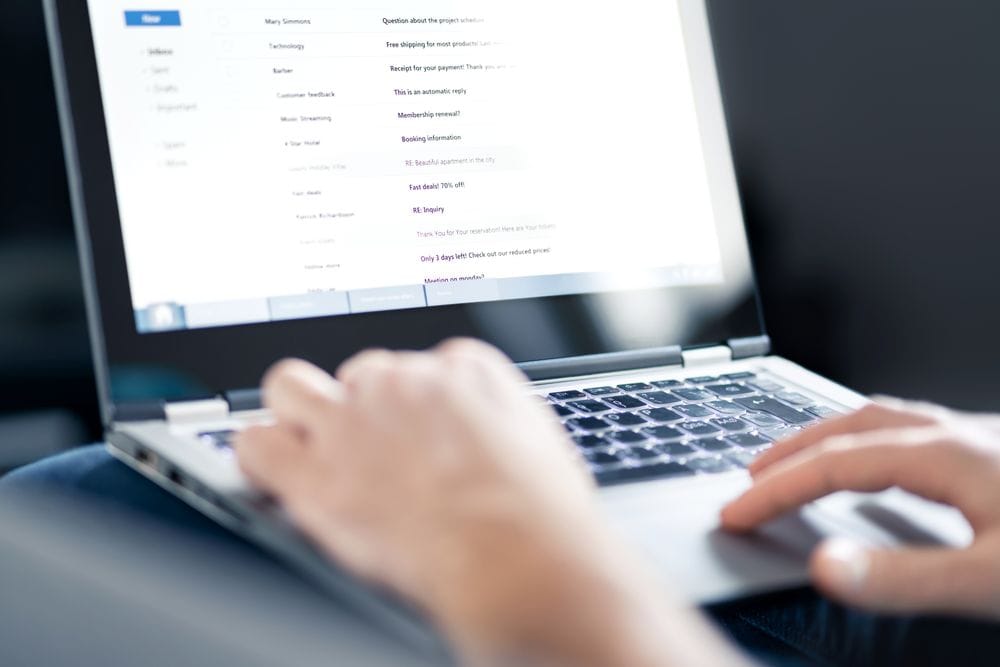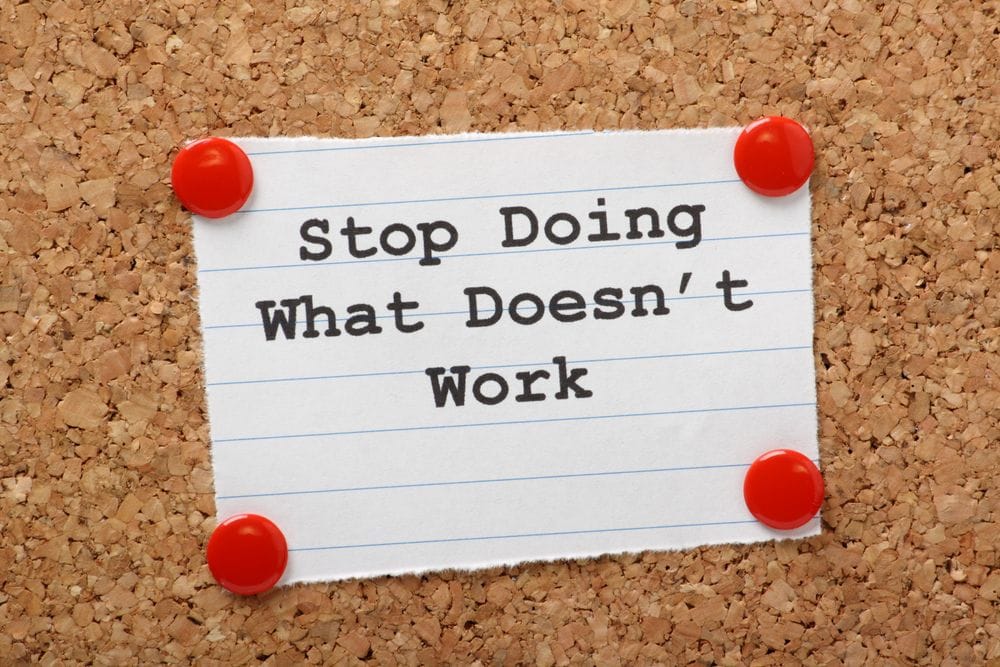When it comes to email communication, the ending might be the last thing on your mind. After all, you've crafted the perfect subject line, written a compelling message, and provided all the necessary information. But here's the thing: the email closing holds more power than you might imagine.
It's the final impression you leave on your recipient, the punctuation mark at the end of your conversation. It’s not part of email copywriting that should be glossed over. A strong email closing can make all the difference in how your message is perceived and whether it elicits the desired response.
The Art of Politeness and Professionalism

Where face-to-face interactions are replaced by virtual exchanges, politeness, and professionalism become paramount. Your email closing is an opportunity to showcase these qualities and leave a lasting impression of courtesy and respect.
Instead of opting for a mundane "Regards" or "Sincerely," why not add a touch of personalization to your sign-off? Consider using phrases like "Warm regards" or "Best wishes," which infuse your closing with warmth while maintaining a professional tone.
Crafting a Compelling Call to Action
An effective email closing doesn't just bid farewell; it also prompts the recipient to take action. Whether you want them to schedule a meeting, provide feedback, or visit your website, a clear and compelling call to action is essential.
Try using a more action-oriented approach instead of the vague and oft-overused "Let me know if you have any questions." Encourage them to "Schedule a call today" or "Take advantage of our limited-time offer." By using language that motivates and guides you, you increase the chances of your desired outcome.
Personalization for Connection
Personalization is a game-changer in a world inundated with automated messages and impersonal interactions. It shows the recipient that you've taken the time to understand their needs and individuality.
You establish a deeper connection by incorporating personal details in your email closing, such as referencing a previous conversation or mentioning the company's recent achievements. For example, instead of a generic sign-off, you could say, "Looking forward to discussing your upcoming product launch," demonstrating your attentiveness and genuine interest.
Aligning Tone and Context
The tone of your email closing should harmonize with the overall message and your relationship with the recipient. If your email is formal and business-oriented, it's also essential to maintain that tone in your closing.
Consider using a closing like "Yours Genuinely" or "Respectfully" to match the level of formality. Conversely, if your email exchanges are more casual and friendly, you can opt for closings like "Take care" or "Talk soon." Consistency in tone helps create a cohesive and harmonious communication experience. Email closings are an opportunity to leave a positive, memorable impression.
We'll delve into some overused and ineffective closings you should avoid at all costs. Let's bid adieu to the clichés and embrace more engaging and impactful ways to conclude your emails.
Breaking Free from Bland and Boring Email Endings

Certain closings have become as stale and overused. It's time to break free from the chains of the mundane and infuse your email closings with freshness and vitality. Avoiding these overused and ineffective closings can leave a stronger and more memorable impression on your recipients.
The Bland and Boring
Imagine receiving an email that concludes with a lifeless "Thank you" or “Regards." It leaves you feeling underwhelmed and disengaged, doesn't it? These cliché closings have lost their impact through excessive repetition.
Instead, consider using phrases like "Appreciatively yours" or "With sincere gratitude" to convey a more genuine sense of appreciation.
The Abrupt Conclusion
Have you ever received an email that abruptly ends, leaving you with an unsettling feeling? It's as if the conversation took a sudden nosedive off a cliff. An abrupt conclusion lacks finesse and can come across as impolite or unprofessional.
To avoid this pitfall, make sure to include a concluding statement that wraps up the email gracefully. For instance, you can add a sentence like "Thank you again for your time and consideration" before your closing.
The Overly Familiar
While fostering a friendly rapport with your recipients is crucial, being excessively familiar with your email closings can cross the line of professionalism. Closings like "XOXO" or "Take care, buddy" might be suitable for close friends or family, but they don't belong in a business or professional setting. Instead, strike a balance between warmth and professionalism by using closings like "Warmly" or "Kind regards."
By steering clear of these overused and ineffective closings, you're already on your way to making your email communication more engaging and impactful. Now it's time to put these to use in your cold email marketing efforts.
Enhancing Email Endings for Cold Email Marketing

Cold email marketing is a unique process that requires a delicate balance of strategy and personalization. There are certainly some secrets to crafting email closings that stand out. Implement the following techniques, and you'll forge meaningful connections with your recipients and boost the effectiveness of your cold email campaigns.
Personalization and Research
Personalization is your golden ticket to success when reaching out to prospects in the cold email landscape. Gone are the days of generic, one-size-fits-all closings. Take the time to research your recipients and tailor your email closing accordingly. Reference their recent achievements, mention a common interest, or highlight a specific pain point they may be experiencing.
For example, you could say, "Looking forward to helping you streamline your marketing efforts" or "Excited to discuss how our solution can solve [specific challenge]." These personalized closings demonstrate that you've done your homework and show genuine interest in their needs.
Building Trust and Credibility
Establishing trust and credibility is necessary when sending cold emails. Consider incorporating a brief testimonial or success story in your closing to demonstrate social proof.
For instance, you could say, "Check out how we helped [Client Name] increase their conversion rates by 40%" or "Join the ranks of satisfied customers who have experienced remarkable results with our product." By leveraging social proof, you instill confidence in your recipients and increase the likelihood of a positive response.
Incorporating Value Proposition
A compelling value proposition can make or break your outreach email marketing strategy. Your closing should succinctly communicate the unique benefits and value your product or service brings to the table.
Instead of a generic closing, try something like, "Unlock the potential of your business with our innovative software" or "Experience unprecedented growth and efficiency with our tailored solutions." Emphasize the value your offering brings. Then you can capture the attention of your prospects and entice them to explore further.
Using personalization, trust-building elements, and a strong value proposition in your email closings lets you transform your cold outreach into a powerful tool for generating leads and driving conversions. But remember, mastering the art of cold email marketing requires continual refinement and experimentation.
Best Practices for Effective Email Endings

Crafting email closings that leave a lasting impact requires a careful balance of professionalism, personalization, and clarity. Adhering to some best practices will ensure that you can master the art of ending an email.
Keep It Concise and Clear
Brevity is key. Avoid lengthy and convoluted closing statements that might confuse or overwhelm your recipients. Instead, aim for simplicity and clarity. Choose concise phrases that effectively convey your intended message while maintaining a professional tone.
Maintain Consistency with Brand Voice
Consistency is the backbone of a strong brand identity. Your email closings should reflect the unique voice and tone of your brand. Whether your brand persona is casual and friendly or formal and authoritative, ensure that your closings align with that image.
Consistency in tone helps establish trust and familiarity with your audience. For instance, a tech startup might opt for a closing like "Stay innovative" or "Tech-forward regards," while a financial institution might lean towards "Trustfully" or "Securely yours."
Test and Iterate
Email communication is not a one-size-fits-all approach. What works for one audience or campaign might not resonate with another. To optimize your email closings, testing different variations and iterating based on the results is crucial. Experiment with different language, personalization levels, or calls to action in your closings to see what generates the highest engagement and response rates. Through continuous testing and refinement, you can find the best closing strategies for your specific audience and objectives.
Proofread and Edit
Nothing undermines the professionalism of an email like spelling and grammar mistakes. Before sending any email, take the time to proofread and edit your message, including the closing. Sloppy errors can leave a negative impression and diminish the impact of your closing statement. Use spell-check tools and read your email carefully to catch any mistakes or awkward phrasing. A polished and error-free closing reinforces your attention to detail and enhances your overall credibility.
Key Takeaways
Remember, ending an email is not a mere formality but an opportunity to leave a lasting impression. By infusing your closings with politeness, professionalism, and personalization, you can foster meaningful connections, encourage action, and build trust with your recipients.
Avoid falling into the habit of overused closings, and instead, opt for engaging and impactful alternatives that reflect your brand's unique voice and values.
- Test different variations, iterate based on the results, and always strive for clarity, consistency, and professionalism.
- Experiment with the strategies and techniques, and adapt them to your unique audience and goals.
- Take the time to proofread and edit your emails to ensure error-free communication that reflects your attention to detail.
Now that you know how to master the art of closing an email it’s time to put that to good use. With an email tool like Instantly you can easily implement your knowledge and begin email marketing automatically. Get started today!





